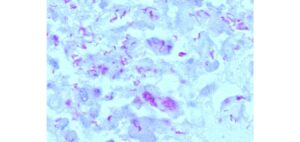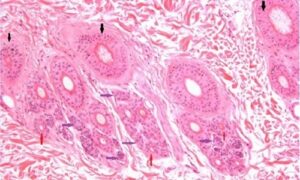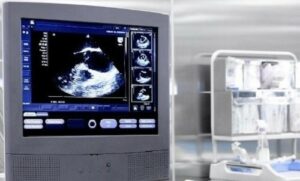Read the outputs and publications from our funded studies
|
|
Cross-sectional UK surveys demonstrate that owners and veterinary professionals differ in their perceptions of preventive and treatment healthcare needs in ageing dogsby Lisa Wallis and colleagues at the University of Liverpool This second publication from the ‘Old Age Pets’ study behind the Ageing Canine Toolkit reports that some dog owners think many important changes in their older pets are ‘just old age’, so don’t take them to the vet, when actually they are signs of serious health problems. |
|
|
Recording of suspected adverse drug reaction reporting in veterinary free-text clinical narrativesby Heather Davies and colleagues at the University of Liverpool As an undergraduate vet student, Emily Blackwell carried out a summer research project funded by PetSavers which helped to highlight the scale of adverse drug reaction (ADR) underreporting in the veterinary profession. The analysis of electronic health records from the Small Animal Veterinary Surveillance Network (SAVSNET) found that around 90% of suspected ADRs go unreported. Read more and access the publication here
|
|
|
Exploring antibiotic prescription for GI clinical presentations in cats and dogs using a mixed methods analysisby Ivo Fins and colleagues at the University of Liverpool Professor Alan Radford was awarded our funding for a master’s student to use a mixed methods approach to explore antibiotic prescription in gastroenteritis with electronic health data. |
|
|
Identifying biomarkers that could aid meniscal injury diagnosis in dogsby Christine Pye and colleagues at the University of Liverpool Professor Mandy Peffers was awarded our grant for a master’s student to investigate potential biomarkers from stifle joint synovial fluid of dogs with cranial cruciate ligament rupture. The possible biomarkers identified could allow for the development of a minimally invasive test to diagnose meniscal injuries and reduce the need for surgical diagnosis. |
|
|
The role of myxomatous mitral valve disease in canine vascular dysfunctionby Marco Mazzarella and colleagues at the University of Edinburgh Dr Geoff Culshaw received our funding for a master’s student to explore the roles of ageing and myxomatous mitral valve disease in vascular dysfunction in dogs. As part of this study, they assessed the feasibility of isometric myography to quantify endothelial dysfunction in affected dogs. |
|
|
Defining the duodenal mycobiota in dogs with chronic enteropathyby Aarti Kathrani and colleagues at the RVC Aarti Kathrani and colleagues cultured fungal isolates from the duodenum of dogs with gastrointestinal signs undergoing routine endoscopic examination using a technique that successfully cultured Malassezia species. |
 |
Prevalence and risk factors for common respiratory pathogens within a cohort of pet cats in the UKby Iris Chan and colleagues at the University of Bristol Feline calicivirus (FCV) along with feline herpesvirus (FHV) and Chlamydia felis are highly contagious, common oral infectious agents of cats, and the main cause of upper respiratory tract disease in cats. However, little is known about their occurrence in the UK pet cat population and the risk factors for their oral carriage. New research, funded by BSAVA PetSavers, assessed the prevalence and risk factors for common respiratory pathogens in cats, using buccal swabs collected from 430 cats enrolled in the Bristol Cats Study. Feline calicivirus was identified as the most common upper respiratory tract pathogen in UK pet cats. |
 |
“Just old age” – a qualitative investigation of owner and veterinary professional experiences of and attitudes to ageing in dogs in the UKby Lisa Wallis and colleagues at the University of Liverpool Dogs are living up to twice as long as they did 40 years ago which has implications for their healthcare and wellbeing, but it may be difficult for owners to distinguish between normal age-related changes and serious diseases that require veterinary treatment. To help address this, BSAVA PetSavers funded a major research project at the University of Liverpool – Old Age Pets – to help vets and owners provide the best care for their senior and geriatric dogs. This paper reports findings from the qualitative part of the project, which carried out in-depth interviews with owners and veterinary professionals about caring for senior dogs. |
 |
Outcome of chronic inflammatory enteropathy in cats: 65 cases (2011-2021) and Characterization of intestinal fibrosis in cats with chronic inflammatory enteropathyby Yuvani Bandara and colleagues at the RVC Dr Aarti Kathrani received our funding for a master’s degree by research characterising intestinal fibrosis in 65 cats with chronic inflammatory enteropathy and determining its clinical significance. The study found that physical and laboratory variables measured at the time of histopathological diagnosis of disease were not predictors of death due to gastrointestinal disease, or length of survival. However, the attainment of clinical remission reduced the likelihood of subsequent death due to gastrointestinal disease. This was published in the March 2023 issue of the Journal of Small Animal Medicine. Read our press release about this work here. Intestinal biopsy specimens from these cats were stained with Masson’s trichrome stain and anti-vimentin and anti-collagen I antibodies to identify intestinal fibrosis, in addition to the routine haematoxylin and eosin staining. This additional staining was found to give better identification of intestinal fibrosis and prognostic information, with vimentin labelling and Masson’s trichome staining identifying additional cases of intestinal fibrosis in 65% and 58% of the duodenal biopsy specimens, respectively. Moreover, vimentin labelling detected intestinal fibrosis in 79% of the colonic biopsy specimens. Positive vimentin labelling and Masson’s trichrome staining of the colonic mucosa were associated with a significantly decreased likelihood of attaining clinical remission and increased risk of death because of chronic inflammatory enteropathy (p < 0.05). This was published in the April 2023 issue of the Journal of Veterinary Internal Medicine. |
 |
Urinary extracellular vesicles as a source of protein-based biomarkers in feline chronic kidney disease and hypertensionby Jack Lawson and colleagues at the RVC and University of Cambridge A paper in the January 2023 issue of JSAP reports on the successful isolation of extracellular vesicles from stored cat urine, and shows that the vesicles had differential protein expression between cats with normotensive chronic kidney disease (CKD) and hypertensive CKD. This project was awarded PetSavers funding to better understand the pathogenesis of feline CKD and hypertension as urinary extracellular vesicles, which originate from the kidney, are a potential source of biomarkers for CKD. |
 |
Parallel roles of neuroinflammation in feline and human epilepsiesby Sophie Binks and colleagues at the University of Oxford As part of their BSAVA PetSavers-funded clinical research project improving the recognition, diagnosis and treatment of cats with seizures due to autoantibodies of the central nervous system, a treatable cause of feline seizures and status epilepticus, Sophie Binks and colleagues were invited to submit a review on autoimmune encephalitis. This discusses the role of neuroinflammation and autoantibodies in human and feline epilepsy and limbic encephalitis. |
 |
Approach to initial management of canine generalised epileptic seizures in primary-care veterinary practices in the United Kingdomby Matt James, Laurent Garosi and colleagues Laurent Garosi received funding to investigate how primary care clinicians in the UK approach the initial management of canine generalised epileptic seizures including factors potentially associated with prescription and the choice of anti-seizure drugs. |
 |
Insulin expression in β cells is reduced within islets before islet loss in diabetic catsby Valeria Bergomi and colleagues at the University of Cambridge Dr Kate Hughes received BSAVA PetSavers funding for a master’s degree by research to explore pancreatic islets in canine and feline diabetes. Her student, Valeria Bergomi, found a significantly reduced overall islet mass in diabetic cats (standard error=0.0389, t value=−4.490, P=0.0003) and significantly lower insulin expression from β cells prior to cell loss compared with control cats, suggesting reduced insulin expression occurs before islet loss in diabetic cats. The paper reporting this is published in the November 2022 issue of JSAP, and also shows the value of using the CUBIC method to render tissue transparent and investigate the 3D islet microanatomy of cats. |
 |
Advances in the pharmaceutical treatment options for canine osteoarthritisby Christine Pye and colleagues at the University of Liverpool As part of her BSAVA PetSavers-funded master’s degree by research, Christine Pye reviewed the current evidence behind pharmaceutical treatment options for canine osteoarthritis, including non-steroidal anti-inflammatory drugs, piprants, monoclonal antibodies, adjunctive analgesics, structure modifying osteoarthritis drugs and regenerative therapies. |
 |
Erythrocyte recovery using a cell salvage device shown to be efficient, and as effective as manual swab washing in an ex vivo comparisonby Andrea Galliano, Ivan Kalmukov and colleagues at Fitzpatrick Referrals A new BSAVA PetSavers-funded study showed that red blood cell recovery could be efficiently achieved using a cell salvage device, with higher volumes of blood retrieved by direct suction rather than rinsing blood-soaked swabs and salvaging the flush. Recovery was efficient by both manual agitation and filtration (>83%), with no significant difference between the two methods, while the potential for the automation of filtration swab-washing could have benefits in a clinical setting. |
 |
Dogs fed raw meat diets are more likely to have a Salmonella and antimicrobial-resistant E. coli faecal carriageby Ellyn Groat and colleagues at the University of Liverpool Raw meat diets have become increasingly popular for dogs in recent years, but their health impacts continue to generate debate amongst the veterinary profession, pet owners, and commercial food producers. Newly published research from an undergraduate project funded by BSAVA PetSavers demonstrates that UK dogs eating raw meat diets are more likely to have Salmonella and antimicrobial-resistant E. coli in their faeces than those fed a non-raw diet. |
 |
Assessment of the inter-rater agreement of corneal cytology and culture findings in canine ulcerative keratitisby Negar Hamzianpour and colleagues at the Eye Veterinary Clinic, Herefordshire Little is known about the diagnostic value of corneal cytology and whether the level of training affects its reliability. This BSAVA PetSavers-funded study showed that appropriate training and expertise is required for the evaluation of corneal cytology for canine ulcerative keratitis cases to prevent misdiagnosis and inappropriate treatment. |
 |
Distinguishing between Mycobacterium infections causing feline tuberculosis lesionsby Jordan Mitchell and colleagues at the University of Edinburgh Mycobacterium bovis and M. microti cause tuberculosis (TB) in a wide range of animals. Both produce identical macroscopic lesions, but they differ with respect to their zoonotic potential. This BSAVA PetSavers-funded study compared histological and immunohistochemistry patterns of feline TB granulomas to help differentiate between the two causes of TB in cats. |
 |
Serum anti-GM2 and anti-GalNAc-GD1a IgG antibodies are biomarkers for acute canine polyradiculoneuritisby Dr Angie Rupp and colleagues at the University of Glasgow This study of a large geographically heterogenous cohort of dogs with acute canine polyradiculoneuritis (ACP) validated the use of anti-GM2 and anti-GalNAc-GD1a immunoglobulin G anti-glycolipid antibodies as serum biomarkers for ACP. Anti-GM2 AGAb measurement was identified as the most convenient single supportive biomarker for ACP. Read more and access the publication
|
 |
Use of acupuncture as adjuvant analgesic technique in dogs undergoing thoracolumbar hemilaminectomyby Hanna Machin and colleagues at the RVC Acupuncture was found to help with the quality of pain relief associated with hemilaminectomy in dogs, reducing the need for opioid consumption. |
 |
Preliminary investigation of serum cardiac troponin I in dogs with acute ischaemic strokeby Rita Gonçalves and colleagues at the University of Liverpool Serum cardiac troponin I levels were elevated in dogs with acute ischaemic stroke, although they had no prognostic value in this preliminary study. Cerebrovascular disease is a common cause of acute neurological dysfunction in dogs but no prognostic biomarkers have yet been identified. Cardiac troponins are routinely used as biomarkers for the diagnosis of acute myocardial infarction in humans, and increased troponin concentrations have been detected in both congenital and acquired heart diseases of dogs. |
 |
Transverse sectioning in the evaluation of skin biopsy specimens from alopecic dogsby Professor Ross Bond and colleagues at the RVC This study showed that transverse sectioning confers significant benefits and complements traditional vertical sectioning in the histological assessment of canine hair follicle diseases. |
 |
The effect of myxomatous mitral valve disease severity on packed cell volumeby Professor Adrian Boswood and colleagues at the RVC This work identified an inverse relationship between packed cell volume (PCV) and the severity of myxomatous mitral valve disease (MMVD) in dogs. The study was a retrospective analysis of prospectively collected data selected from a large population of dogs (n=289) on more than one occasion (n=1465 visits) between 2004-2017 at a research clinic conducted by the RVC in two primary-care practices in London. A control population of normal, unaffected patients seen at the same research clinic was included in the study. Appropriate statistical techniques were used to account for repeated measures from the same individual. Read more and access the publication
|
 |
Associations between neutering and early‐onset urinary incontinence in UK bitches under primary veterinary careby Camilla Pegram and colleagues at the RVC This research as part of a master’s degree identified neutering itself and early-age neutering as major risk factors for early-onset urinary incontinence (UI) in bitches. |
 |
Randomised controlled trial of fractionated and unfractionated prednisolone regimens for dogs with immune-mediated haemolytic anaemiaby James Swann and colleagues A single daily dose of prednisolone resulted in fewer adverse effects than a split dose (twice daily regime) in the treatment of dogs with immune-mediated haemolytic anaemia (IMHA). |
 |
Thyroid and renal function in cats following low‐dose radioiodine (111Mbq) therapyby Dr Natalie Finch and colleagues at the University of Bristol Low‐dose radioiodine is an effective treatment for hyperthyroidism in most cats but overt hypothyroidism may develop in some. Total thyroxine and thyroid stimulating hormone monitoring should be performed post-therapy, and glomerular filtration rates (GFR) should be measured in non‐azotaemic cats to detect early declines in renal function. |
 |
Risk indicators in cats with preclinical hypertrophic cardiomyopathy: a prospective cohort studyby Vicky Ironside and colleagues at Hallam Veterinary Centre Increased left atrial sizes and higher baseline NTproBNP concentrations were found to help identify cats with preclinical hypertrophic cardiomyopathy (HCM) which go on to develop cardiac-related events. This prospective study followed 47 cats diagnosed with preclinical HCM for a median period of 1135 days. At baseline and during repeat visits, they underwent physical examination, blood pressure measurements, blood sampling, and echocardiography. Fifteen cats (31.9%) experienced at least one cardiac-related event during this time: six with congestive heart failure, five with arterial thromboembolisms, and five with sudden death. |
 |
Prospective evaluation of an extra-anatomic ureteric bypass device for management of cats with ureteric obstructionby Zoe Halfacree and colleagues at the RVC Use of a subcutaneous ureteral bypass (SUB) to overcome ureteral obstructions in cats was found to be associated with a high prevalence of complications but a median survival time exceeding 2 years. Ultrasonography was useful in the initial assessment of SUB usage and fluoroscopy was essential in identifying leaks, blockages or SUB displacement, and for guiding surgical treatment.Ureteral obstructions are becoming increasingly diagnosed in cats, and are commonly caused by calcium oxalate kidney stones. An SUB consisiting of an extra‐anatomic device consisting of a locking loop nephrostomy catheter connected to a cystostomy catheter via a subcutaneous port was retrospectively assessed in cats treated for benign ureteral obstruction. |






